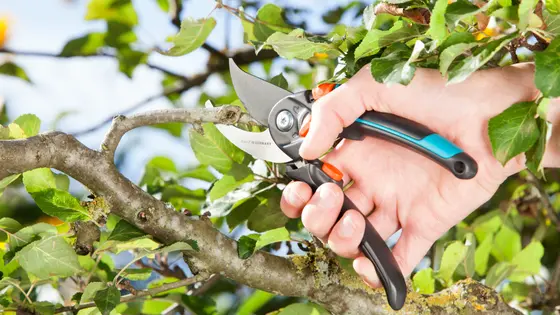
Difference between bypass and anvil secateurs
- Discover
- Gardening inspiration
- Magazine
- Difference between bypass and anvil secateurs
Bypass secateurs offer precision, while anvil secateurs offer force. When should you use each cutting principle?
Anvil secateurs have a cutting blade that comes into contact with smooth metal, and are suitable for cutting finger-thick branches and solid wood.
However, as anvil secateurs do bruise the plant tissue, they should only really be used for cutting or chopping up dead wood.

anvil secateur
Bypass secateurs use two blades that glide past each other, enabling a sharp, clean cut, close to the stem or root.
Bypass secateurs are therefore particularly suited for cutting living plant tissue. They can be used to cut young or soft wood, as well as semi-woody garden bushes and shrubs.

bypass secateur
Quality is important with both types of secateurs: High-quality, sharp blades will give you the optimum cut.
Maintenance is key for the long service life of your pruning tools so keep them sharp and well oiled. Regular care of your tools will keep them at their peak and will save you time and money both on tools and plants in the future.
It is vital to clean secateurs between plants to avoid the spread of disease-causing bacteria and spores from one plant to another. You may also want to do this when removed a branch that appears diseased or has died in case it has been infected by a fungal disease. The best way to do so is to wipe the blades with either bleach, alcohol wipes or bottled methylated spirits (10%) then rinse.

